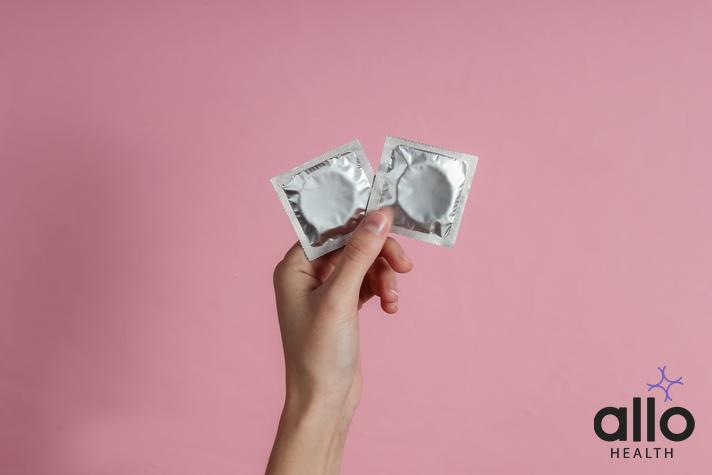What Are The Causes Of Human Papillomavirus (HPV)?

Allo Health is dedicated to personalized well-being, offering support and trusted information tailored to individual health goals. The platform emphasizes human-generated content, led by a distinguished medical team of experts, including physicians and sexual health specialists. Their commitment to credibility involves rigorous fact-checking, authoritative research, and continuous updates to ensure accurate, up-to-date information. Allo Health's unique approach goes beyond conventional platforms, providing expert-led insights and a continuous commitment to excellence, with user feedback playing a crucial role in shaping the platform's authoritative voice.

Dr Sanina Mansoor holds MBBS degree from Yenepoya university,Mangalore.She has 8 years of experience working as a medical officer at various health centres and medical colleges.
Why This Was Upated?
Our experts continually monitor the health and wellness space, and we update our articles when new information became available.
Updated on 21 May, 2024
- Article was updated as part of our commitment to diversity, equity, and inclusion.
"The following blog article provides general information and insights on various topics. However, it is important to note that the information presented is not intended as professional advice in any specific field or area. The content of this blog is for general educational and informational purposes only.
Book consultation
The content should not be interpreted as endorsement, recommendation, or guarantee of any product, service, or information mentioned. Readers are solely responsible for the decisions and actions they take based on the information provided in this blog. It is essential to exercise individual judgment, critical thinking, and personal responsibility when applying or implementing any information or suggestions discussed in the blog."
Human Papillomavirus (HPV) infection is one of the most common sexually transmitted infections worldwide, affecting millions of individuals each year. Understanding the causes of HPV infection is crucial for prevention, early detection, and effective management of this viral disease. In this comprehensive article, we explore the various factors contributing to HPV transmission and infection.
What is HPV?
Human Papillomavirus (HPV) is a group of over 200 related viruses, among which approximately 40 types are known to infect the genital area. These viruses are primarily transmitted through skin-to-skin contact, particularly during sexual activity. While some strains of HPV cause benign conditions like genital warts, others are associated with various cancers, including cervical, anal, penile, vaginal, vulvar, and oropharyngeal cancers.
Causes of HPV Infection
Sexual Contact
Sexual activity, including vaginal, anal, and oral sex, is the primary mode of HPV transmission. The virus is most commonly spread through direct skin-to-skin contact with an infected person, even if the infected individual does not have visible symptoms such as genital warts. It’s important to note that penetrative sex is not required for HPV transmission; the virus can spread through any form of sexual contact, including genital-to-genital, oral-to-genital, or hand-to-genital contact.

Multiple Sexual Partners
Having multiple sexual partners increases the risk of HPV infection. The more sexual partners a person has, the higher their likelihood of coming into contact with someone who carries the virus. Individuals who engage in high-risk sexual behaviours, such as unprotected sex or sex with partners of unknown HPV status, are at an increased risk of acquiring HPV infection.
Unprotected Sex
Using condoms consistently and correctly during sexual activity can reduce the risk of HPV transmission, but it does not eliminate the risk entirely. HPV can infect areas not covered by a condom, such as the genital skin and surrounding areas. Additionally, condoms may not provide complete protection against HPV if they do not cover all infected skin areas or if there is skin-to-skin contact outside the covered area.
Early Sexual Activity
Engaging in sexual activity at a young age, particularly before the age of 18, increases the risk of HPV infection. Adolescents and young adults who initiate sexual activity early may be more susceptible to HPV infection due to hormonal changes, immature immune systems, and lack of awareness about safe sex practices and HPV vaccination.
Immune Suppression
Individuals with weakened immune systems are at an increased risk of HPV infection and are more likely to develop persistent HPV-related lesions and cancers. Immune suppression can result from various factors, including HIV/AIDS, organ transplantation, long-term steroid use, chemotherapy, or other medical conditions that compromise the immune system’s ability to fight off infections.

Smoking
Smoking tobacco has been identified as a risk factor for HPV infection and HPV-related diseases, including cervical cancer. Tobacco smoke contains carcinogenic compounds that can weaken the immune system and promote the growth of HPV-infected cells, increasing the likelihood of HPV persistence and progression to cancer.
Genetic Factors
Some individuals may be genetically predisposed to HPV infection or may have genetic variations that affect their immune response to the virus. Genetic factors can influence susceptibility to HPV-related diseases, the likelihood of HPV clearance, and the effectiveness of HPV vaccination.
Lack of HPV Vaccination
HPV vaccination is a highly effective preventive measure against HPV infection and related diseases. However, individuals who are not vaccinated against HPV are at an increased risk of acquiring the virus and developing HPV-related health conditions, including genital warts and various cancers. Vaccination is recommended for both males and females, typically starting at age 9 to 12, to provide optimal protection before individuals become sexually active.
Human Papillomavirus (HPV) infection is primarily transmitted through sexual contact and is a leading cause of genital warts, cervical cancer, and other HPV-related cancers. Understanding the various causes of HPV infection, including sexual behaviors, immune status, smoking, genetic factors, and vaccination status, is essential for preventing transmission, reducing the burden of HPV-related diseases, and promoting sexual health. By adopting safe sex practices, getting vaccinated against HPV, and raising awareness about the importance of HPV prevention and early detection, we can work towards reducing the prevalence and impact of HPV infection worldwide.
Most Asked Questions
-
Can HPV be transmitted through non-sexual means?
While sexual contact is the primary mode of HPV transmission, the virus can also be spread through non-sexual means, such as skin-to-skin contact. This can occur through direct contact with an infected area, including genital-to-genital, oral-to-genital, or hand-to-genital contact.
-
How long does it take for HPV symptoms to appear after exposure?
In many cases, HPV infection does not cause noticeable symptoms, especially in the early stages. When symptoms do occur, such as genital warts or abnormal changes in cervical cells, they may appear weeks, months, or even years after exposure to the virus.
-
Can HPV infection be prevented if you only have one sexual partner?
While having fewer sexual partners can reduce the risk of HPV infection, it does not eliminate the risk entirely. HPV can be transmitted through any form of sexual contact, so even individuals with only one sexual partner can still be at risk of acquiring the virus if their partner is infected.
-
Is HPV infection more common in certain age groups?
HPV infection can occur at any age, but it is most common among sexually active adolescents and young adults. Early sexual activity, multiple sexual partners, and other high-risk behaviors increase the likelihood of HPV transmission and infection in these age groups.
-
Can HPV infection be cured?
There is currently no cure for HPV infection, but most cases of HPV clear on their own within a couple of years. However, some individuals may develop persistent HPV infection, which can increase the risk of developing HPV-related health conditions, such as genital warts or various cancers. Treatment focuses on managing symptoms and preventing complications.









































